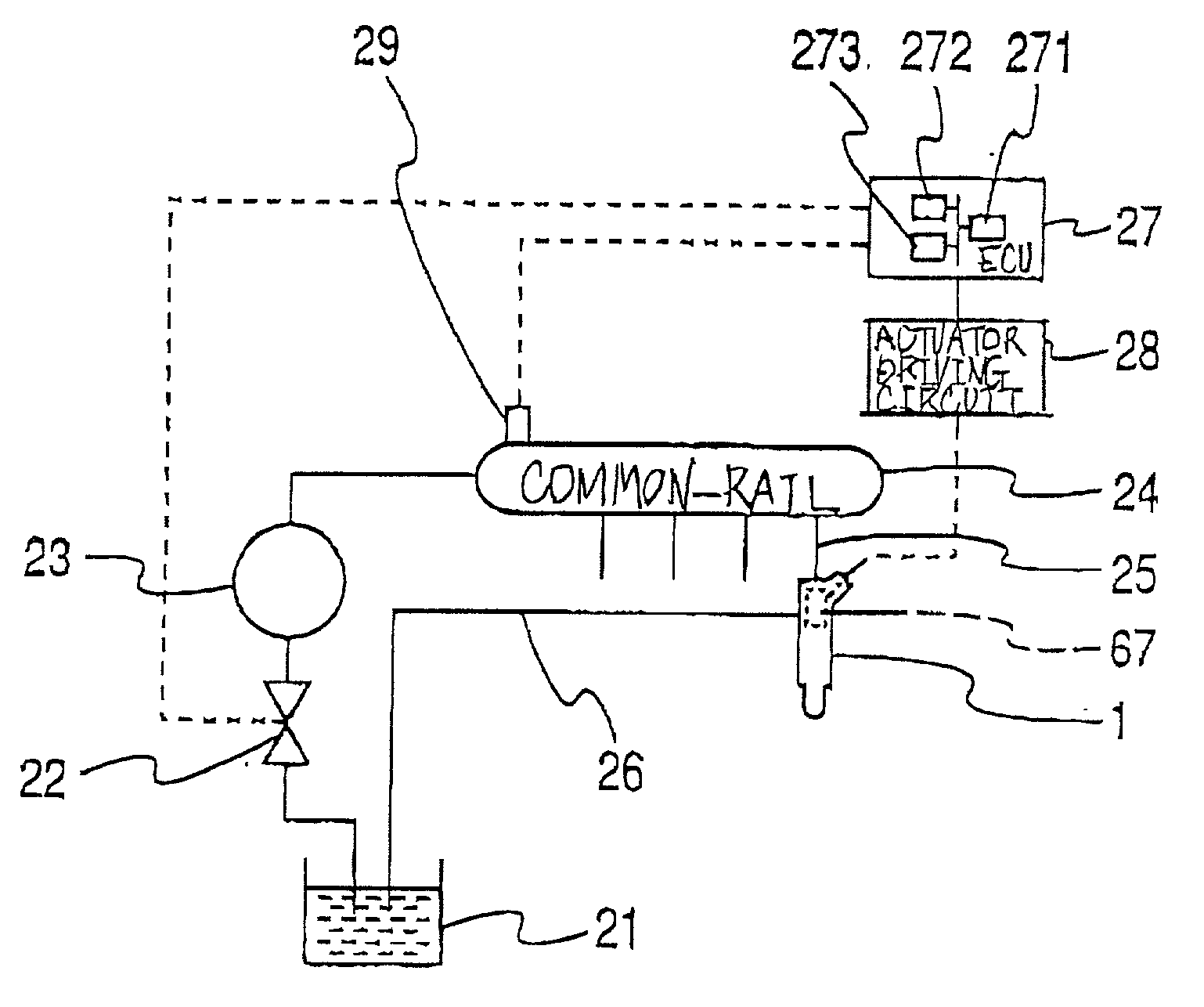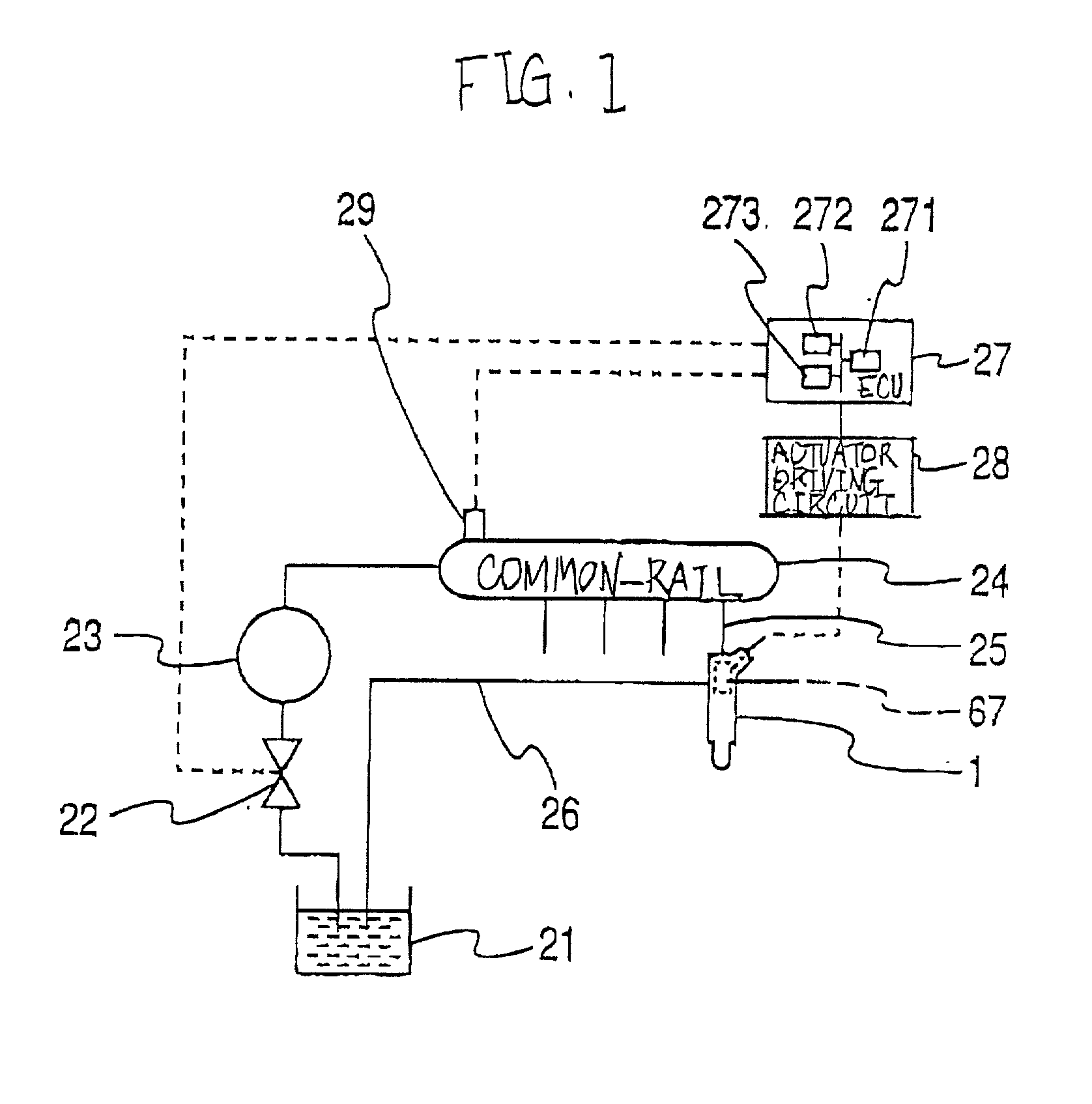Hydraulic control device, system and method for controlling actuator device
a technology of hydraulic control device and actuator device, which is applied in the direction of electric control, machines/engines, mechanical equipment, etc., can solve the problems of system lifting, and inability to completely handle the requirement for reducing exhaust gases
- Summary
- Abstract
- Description
- Claims
- Application Information
AI Technical Summary
Benefits of technology
Problems solved by technology
Method used
Image
Examples
first embodiment
[0044] (First embodiment)
[0045] FIG. 1 shows a configuration of a common-rail fuel injection system to which a first embodiment of the present invention is applied.
[0046] The common-rail fuel injection system comprises injectors (fuel injection valves) 1 for respective cylinders of the common-rail fuel injection system. A number of injectors correspond to that of cylinders of the common-rail fuel injection system. Incidentally, in FIG. 1, one injector 1 is only shown.
[0047] The injector 1 is communicated through a delivery line 25 with a common-rail 24, which is common among the cylinders. The injector 1 is subjected to the fuel delivered from the common-rail 24 so as to inject fuel at an injection pressure into a combustion chamber of the corresponding cylinder, injection pressure which is substantially equal to a fuel pressure in the common-rail 24.
[0048] Fuel in a fuel tank 21 is delivered by the pressure of a high-pressure pump 23 to a common-rail 24 so as to be accumulated ther...
second embodiment
[0128] (Second embodiment)
[0129] In this second embodiment, the configurations of the fuel injection system and the injector 1A are substantially the same as those of the fuel injection system and the injector 1 of the first embodiment, and therefore, the elements of the fuel injection system and the injector 1A of the second embodiment, which are the same as those of the fuel injection system and the injector 1 of the first embodiment, are given the same characters in FIGS. 1.about.3.
[0130] According to the second embodiment, on the ROM 273A, reference voltages V0 of corresponding injectors 1A, reference actuator temperatures T0 thereof, a reference common-rail pressure P0 and a reference lift amount L0 are previously stored as data in addition to the program.
[0131] Furthermore, according to the second embodiment, the CPU 271A of the ECU 27A executes a control program, which is different from that of the first embodiment, so as to control the piezoelectric actuator 67.
[0132] FIG. 5...
PUM
 Login to View More
Login to View More Abstract
Description
Claims
Application Information
 Login to View More
Login to View More - R&D
- Intellectual Property
- Life Sciences
- Materials
- Tech Scout
- Unparalleled Data Quality
- Higher Quality Content
- 60% Fewer Hallucinations
Browse by: Latest US Patents, China's latest patents, Technical Efficacy Thesaurus, Application Domain, Technology Topic, Popular Technical Reports.
© 2025 PatSnap. All rights reserved.Legal|Privacy policy|Modern Slavery Act Transparency Statement|Sitemap|About US| Contact US: help@patsnap.com



